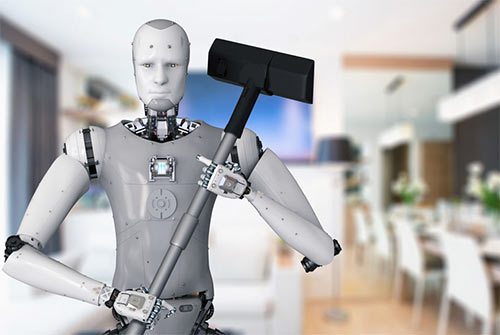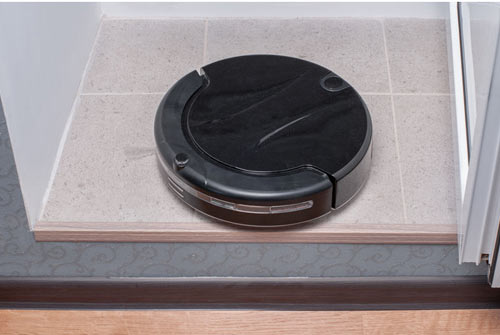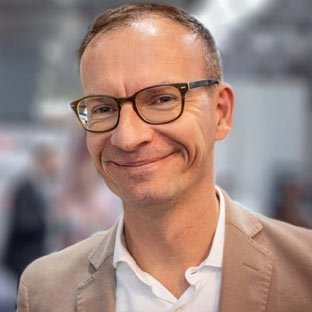Why building technology and cleaning industry will grow together
Anyone who has watched the film “Passengers” can certainly remember the small swarms of robots that clean up immediately as soon as an accident happens. What sounds like pure utopia in the movie could soon become reality. Many of the major cleaning equipment manufacturers are already developing robots of the future. However, there are still a few hurdles to be overcome before robotics can take hold in the cleaning industry.

Building technology plays an important role in this context. So far, the networking between the construction industry and the cleaning industry is still very superficial. In the past, cleaning concepts were not adequately included in the building infrastructure. This often leads to cleaning staff having to improvise on site. Newer buildings are usually planned much more thoughtfully regarding technology. But even here, the rapid developments in the cleaning industry are not sufficiently considered. For fully automated cleaning solutions to be successful in the future, cooperation between the two sectors must be intensified. This affects both the condition of the building and the sensors in the buildings which requires a more intensive exchange of standards. At this time there are too many physical barriers that cause problems for the current technology.
Challenges: planning and integration
Currently, robots fail especially at steps / stairs, cables or unreachable corners. They must also be manually moved between different floors within buildings. In newly planned buildings, either storage rooms for the robotics should be implemented on each floor, or an infrastructure for the free movement of the robotics within the building structure should be established. The negative effects of inadequate consideration of future technologies and customer needs can be seen very clearly in the smart home / smart building sector. A retrofitting of adequate technology is only meaningfully possible in buildings with a core refurbishment.

The currently offered technology in the classic retrofit area, which requires a much lower interference with the building infrastructure, is qualitatively much worse. The same will happen in the cleaning area without forward-looking planning. This includes e.g. wiping, vacuuming, drying, an intelligent selection of cleaning agents for certain types of soiling and/or the cleaning of vertical and horizontal surfaces. To complete these tasks robotically in the present world, you need several robots with different specializations.
Fundamental change in years to come
The cleaning industry will fundamentally change over the next few decades. While cleaners and their proper handling of machinery, equipment and chemistry are in the foreground these days, the future will be more about the technical maintenance and programming of robotics. For example, these activities will most likely be taken over by the building management. Of course, this leads to a completely new requirement and qualification profile for the workforce. At the same time however, training and personnel expenses will decrease enormously. Until complete automation of the cleaning process, there will be some intermediate steps that will be marked as technical aids for the cleaning staff. Many digital innovations in this direction have hit the market in recent years and have already become established. Digital cleaning schedules, telematics solutions, video tutorials and training programs are just a few examples that can be mentioned here.
Smart building enables smart cleaning
The smart building itself can use existing sensors and stored data to provide information that enables much more efficient, and therefore less expensive, cleaning than before. This focuses on the degree of wear and contamination, as well as the changing weather conditions each year. This means that a building is cleaned based on (data) criteria determined in real time. Most of the newer buildings already have sensors for light intensity, solar radiation, degree of utilization and duration, as well as weather data (wind strength, wind direction, moisture, etc.). The use and evaluation of this sensor technology takes the cleaning of a building to a whole new level.
In general, the cleaning industry will also benefit massively from new technologies as long as they optimize the fundamental problems present in the cleaning process. Essentially these are error avoidance, controlling functions as well as time and personnel savings. This can happen through technical aids for the cleaning force or sensors in the buildings. There are several development projects in the VR and AR area. VR training tools can be used, for example, to create realistic training environments which make training possible even without the physical presence of the cleaner and the trainer. Repetitions of training are thereby also much easier and more effective. The cleaning process can be optimized using certain glasses systems with AR technology. Visual surface markings make work progress visible, working hours can be recorded and presented, and tutorials can be recorded.
Infrastructure for future use
In the area of existing building infrastructure, the sensors can help to make cleaning more effective. By detecting the degree of soiling or the general need for cleaning, the cleaning is carried out only in case of need. In the future, this technology can also be linked to robotics, which also minimizes the costly use of personnel. In our article, we show possible scenarios where cleaning can develop, provided that an expected stronger cooperation with the building services takes place. Although many things mentioned sound like pure utopia, the technical possibilities are no longer so far away from fully automated cleaning processes, even if their use in the mass market will take some time.
About the authors:

Frank Völkel - Managing Director at Smartest Home
Expert and pioneer for smart building / smart home in all facets. Built the first smart home in the Munich district 12 years ago, in which extraordinary architecture and technology form a symbiosis. Offers advice and digital services through Smartest Home. Author of successful textbooks and video courses on "Smart Home" and a passionate YouTuber. Presenter and speaker at events / fairs.
Smartest Home
Ringstraße 5A
85774 Unterföhring
Website: www.smartest-home.com
Tel: + 49 (0) 89 780 645 54
Mail: This email address is being protected from spambots. You need JavaScript enabled to view it.

Michael Di Figlia – Managing Director and Head of Cleaning Markets at DTO Research
Michael Di Figlia is Managing Director at DTO Consulting. After working for Bayer AG in the fields of in-house market research and strategic planning as well as various positions at major management consultancies, the trained industrial salesman and MBA graduate founded DTO Research in 2008. The company specializes in supporting its customers with internationalization projects through professional market analyzes and strategic advice.
DTO Research – Cleaning Markets
eine Marke der DTO Consulting GmbH
Benrather Schloßallee
3340597 DüsseldorfWebsite: www.dto-research.de
Tel : 0049 211 179 660 0
Mail : This email address is being protected from spambots. You need JavaScript enabled to view it.



